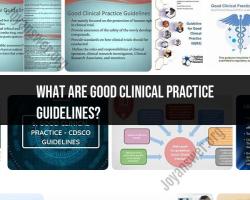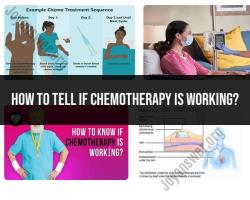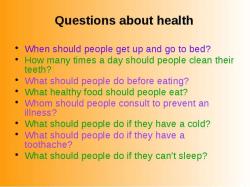What is the treatment for a myocardial infarction?
The treatment for a myocardial infarction, also known as a heart attack, is aimed at restoring blood flow to the heart muscle and minimizing damage. The sooner treatment is started, the better the chances of survival and recovery.
The following are some of the medical procedures and care that may be used to treat a myocardial infarction:
- Aspirin: Aspirin is a blood thinner that can help to prevent blood clots from forming. It is typically given to patients as soon as possible after a heart attack.
- Oxygen: Oxygen can help to improve blood flow to the heart muscle and reduce the workload on the heart. It is often given to patients through a mask or nasal cannula.
- Pain medication: Pain medication can help to relieve chest pain and discomfort. It is often given intravenously in the hospital setting.
- Thrombolytic therapy: Thrombolytic therapy involves the use of medications to dissolve blood clots that are blocking blood flow to the heart muscle. It is typically given to patients within 12 hours of the onset of symptoms.
- Percutaneous coronary intervention (PCI): PCI involves the insertion of a stent into a blocked coronary artery to reopen it. It is typically performed in the cardiac catheterization lab.
- Coronary artery bypass grafting (CABG): CABG involves the creation of a new pathway for blood to flow around a blocked coronary artery. It is typically performed in the operating room.
In addition to medical procedures, patients with a myocardial infarction may also receive the following care:
- Rest: Patients are typically advised to rest in bed for several days after a heart attack. This helps to reduce the workload on the heart and allow it to heal.
- Diet: Patients are typically advised to eat a healthy diet that is low in saturated fat and cholesterol. This helps to reduce the risk of future heart problems.
- Exercise: Patients are typically advised to start exercising gradually after a heart attack. This helps to strengthen the heart muscle and improve cardiovascular health.
- Medications: Patients may be prescribed medications to manage their risk of future heart problems. These medications may include blood pressure medications, cholesterol-lowering medications, and aspirin.
The specific treatment that a patient receives will depend on the severity of their heart attack and their individual medical history. However, all patients with a myocardial infarction should seek prompt medical attention to get the best possible outcome.
Treating Myocardial Infarction: Medical Interventions and Procedures
Myocardial infarction, also known as a heart attack, is a serious medical condition that occurs when blood flow to the heart muscle is blocked. This can damage or destroy heart muscle tissue.
There are a number of medical interventions and procedures that can be used to treat myocardial infarction. The specific interventions and procedures used will depend on the severity of the heart attack and the patient's individual circumstances.
Some of the most common medical interventions and procedures used to treat myocardial infarction include:
- Angioplasty: Angioplasty is a procedure in which a thin tube called a catheter is inserted into a blood vessel and threaded to the blocked coronary artery. A balloon on the end of the catheter is then inflated to widen the artery and restore blood flow to the heart muscle.
- Stent placement: A stent is a small mesh tube that can be inserted into a coronary artery during angioplasty to keep the artery open.
- Thrombolysis: Thrombolysis is a medication that can be administered to dissolve blood clots that are blocking coronary arteries.
- Bypass surgery: Bypass surgery is a procedure in which a healthy blood vessel is used to create a detour around a blocked coronary artery.
Life-Saving Measures: Immediate Treatment for a Myocardial Infarction
The sooner a person with a myocardial infarction receives treatment, the better their chances of survival and recovery.
The following life-saving measures should be taken immediately if someone is suspected of having a heart attack:
- Call 911: Call 911 immediately so that the person can be taken to the hospital for treatment.
- Start CPR: If the person is unconscious, start CPR until help arrives.
- Use an AED: If an automated external defibrillator (AED) is available, use it to shock the person's heart if necessary.
Managing Heart Attacks: Care and Recovery After a Myocardial Infarction
After a person has been treated for a myocardial infarction, they will need to be monitored closely in the hospital. Once they are stable, they will be discharged from the hospital and begin a course of rehabilitation.
Rehabilitation for a heart attack typically includes:
- Medications: Medications will be prescribed to help the person manage their risk of another heart attack.
- Lifestyle changes: The person will be advised to make lifestyle changes, such as quitting smoking, eating a healthy diet, and exercising regularly.
Most people who have a heart attack make a full recovery. However, it is important to follow the doctor's instructions carefully and make the necessary lifestyle changes to reduce the risk of another heart attack.
Here are some additional tips for managing heart attacks and heart attack recovery:
- Follow up with your doctor regularly: It is important to follow up with your doctor regularly after a heart attack to monitor your progress and make sure that you are taking all of the necessary medications and making the necessary lifestyle changes.
- Get regular exercise: Exercise is important for everyone, but it is especially important for people who have had a heart attack. Exercise can help to improve cardiovascular health and reduce the risk of another heart attack.
- Eat a healthy diet: Eating a healthy diet can also help to improve cardiovascular health and reduce the risk of another heart attack. Make sure to eat plenty of fruits, vegetables, and whole grains and limit processed foods, sugary drinks, and saturated and unhealthy fats.
- Avoid smoking: Smoking is a major risk factor for heart disease. If you smoke, quitting is the best thing you can do for your heart health.
By following these tips, you can manage your heart attack and heart attack recovery successfully.













